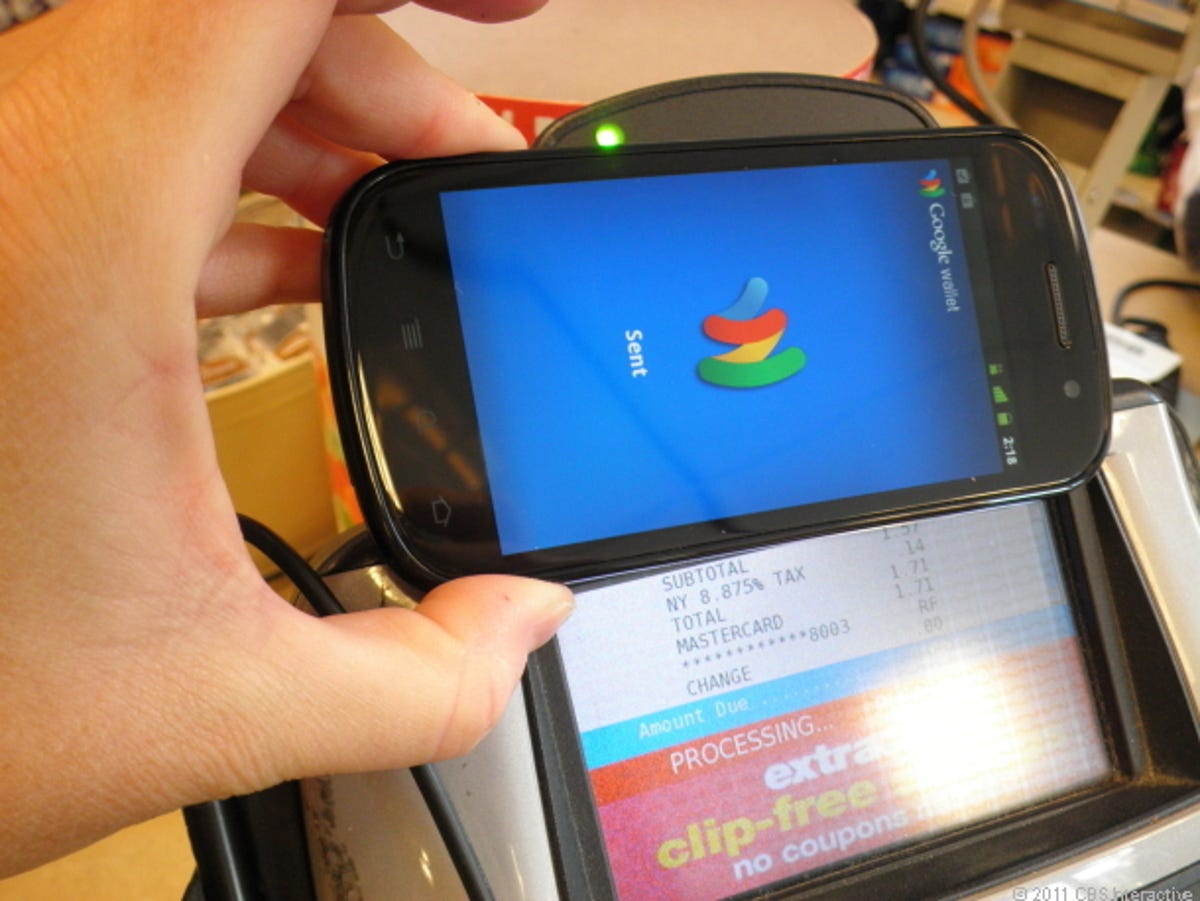
CNET/Marguerite Reardon
LAS VEGAS — It’s been a bumpy ride for Google Wallet since its launch nearly three years ago, but in spite of the obstacles the company has faced, Google head of payments Ariel Bardin says the company isn’t giving up on Wallet or the mobile payments market.
“We have been doing this for a while,” he said during a presentation Wednesday at the Electronic Transactions Association’s Transact 2014 tradeshow here. “And we’ll continue to keep doing this for a long while.”
He acknowledged the slow consumer adoption of Google Wallet, but highlighted the company’s nearly 15-month-long evolution of the product, which now has expanded beyond Google Wallet’s initial reach. And the key to Google Wallet’s transformation has been the cloud.
“We started out with Google Wallet, which equaled NFC [near field communications],” Bardin said. “We still do that, but now we offer many different types of payments and services.”
How has Google Wallet changed?
Google Wallet got its start anchored in a hardware-based short range wireless technology known as NFC. Using this technology, consumers could load credit card information into an Android app that stored the information in a secure element that was part of the NFC chip, and then using the short range wireless technology, it transmitted the payment information from the phone to the sales terminal with a simple tap.
The goal was that people could get rid of all their credit cards, loyalty cards, and coupons that filled their wallets and instead store all of it and access it from their mobile phones. While the idea itself sounded nifty enough, a year after launch Google Wallet still only worked with one credit card and bank combination. And it only worked on one wireless network: Sprint.
Because the NFC solution required that both mobile devices and point of sale processing terminals include hardware, Google struggled to get a foothold in the market. Wireless operators, who were developing their own competing mobile payment solution, shut Google out of their networks and devices. And merchants were reluctant to spend money to upgrade their sales terminals. Google Wallet appeared doomed.


Marguerite Reardon/CNET
Then Google shifted gears and revamped Google Wallet. It still uses NFC for the tap and pay functionality, but it now uses a cloud-based technology called HCE, or host card emulation, to store credit card credentials.
“The technology we initially used relied on hardware,” Bardin explained. “And there were a bunch of hurdles to get it out the door using that approach. So we asked ourselves if we could emulate the secure element in software, and make it a core service in Android.”
That is exactly what the company has done. HCE is now included in Android 4.4, Google’s latest version of Android software. With this new approach, Google has opened up NFC to any developer. Because the technology is built directly into the operating system software it not only works with Google Wallet, but it can also be used by other app developers that are building applications for Android.
“Now anyone in the audience could build an app that leverages the tap-and-pay functionality,” Bardin said.
The ‘cloud’ is the answer.
While tap-and-pay had been the only thing that Google Wallet offered when it first launched, now it’s just one component of the service. With payment credentials stored in the cloud, Google can integrate payments into its other products like Gmail. It also makes the service more flexible for consumers and merchants, which can access the wallet from anywhere. This allows for merchants to embed easy payment buttons into their mobile Web sites that can link directly to payment credentials stored in the cloud.
Bardin said that the beauty of this solution is that it eliminates the need for customers to fill in their credit card information when they want to buy things online using their mobile devices. Because Android users are always “signed-in” on the Google platform, they can leverage their payment credentials from Google Wallet or even their Google Play account to buy things.
The cloud-based nature of the service also makes it easy for consumers to add new credit cards to their Google Wallets. They can also join and add loyalty cards to their Google Wallets. And they can do all of this without ever necessarily entering the app on their devices.
Again because Google Wallet now lives in the cloud, it makes it easier for Google to tie its other services to the wallet. For example, a year ago it added the ability to send and receive payments via Gmail. Google also offers Gmail users the ability to track all their online purchases. The way it works is that users who opt in can allow Google to scan Gmail receipts and then through partnerships with companies like FedEx, Google gets the most up to date information on a package’s status.
The competition is stiff.
It’s easy to see why Google wants in on the mobile payments market. According to Gartner, the global market for mobile payments is forecast to be about $720 billion worth of transactions by 2017. This is up from about $235 billion last year.
But earning cash from these transactions isn’t the only reason that Google sees opportunity in this business. Mobile payments is also simply another vehicle to drive users to other Google services, such as search and advertising.
“We are in the payment business to create a great user experience,” Bardin said. “That’s a little different from others in this industry. Making money will come later.”
Google isn’t the only Internet company that sees potential in this market. Apple has also hinted it wants a piece of the action. The introduction of the Touch ID fingerprint sensor on its iPhone 5S last year could pave the way for secure payment transactions. In January, Apple CEO Tim Cook said his company is with mobile payments. He added that such uses were one of the driving factors behind the introduction of Touch ID.
There are also several other potential competitors, such as PayPal and Amazon. The big phone companies, AT&T, Verizon, and T-Mobile have a joint venture called Isis that is also going after this market. And then there are the many startups wanting in on the mobile payments craze, such as Square, which allows anyone with an iPhone, iPad or Android device to take credit card payments. (The latest rumor is that Google and Apple have each talked to Square about possible acquisitions, according to the news site Re/Code. Bardin did not address the rumors today. And neither Google nor Apple are commenting on the speculation.)
In spite of its struggles to make Google Wallet a success, many in the payments industry believe that Google is still a major contender in the market. And he said that Google and Apple will ultimately be the companies to beat in the mobile payments market.
“Google has the money to make a bad mistake and still recover from it,” Kenneth Douglas, vice president of business partnership development for a Swedish mobile payment called Seqr, said Tuesday during a panel at the Transact 2014 show. “Google and Apple own the most valuable real estate in mobile payments.”



